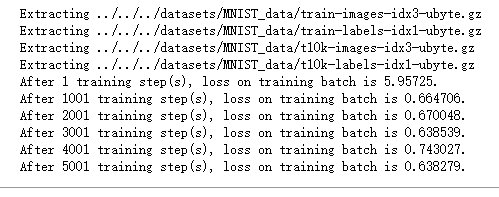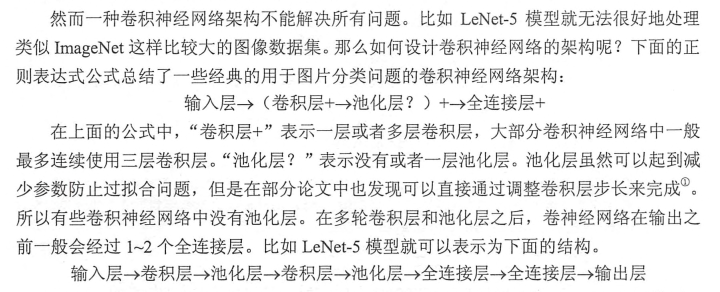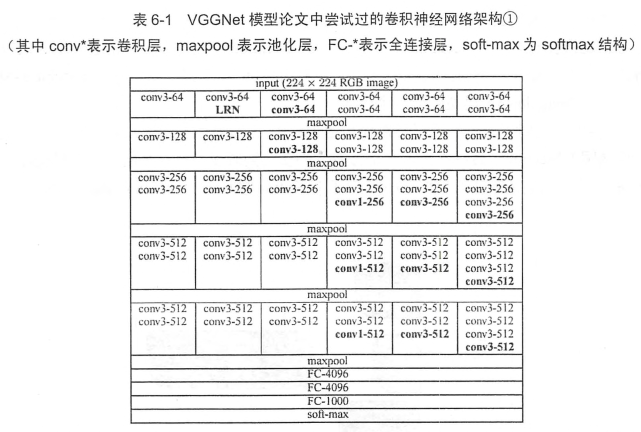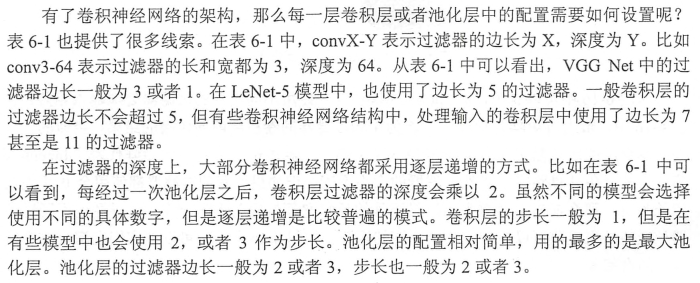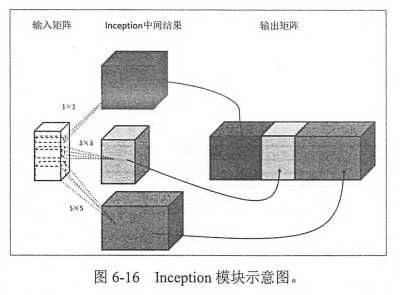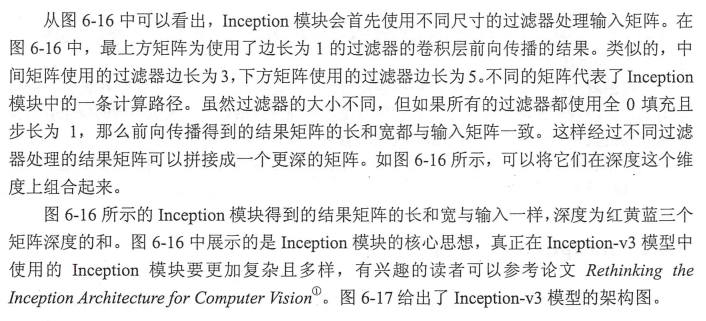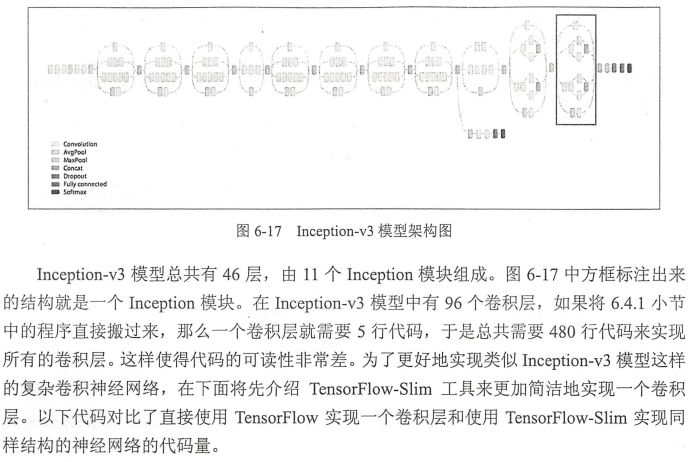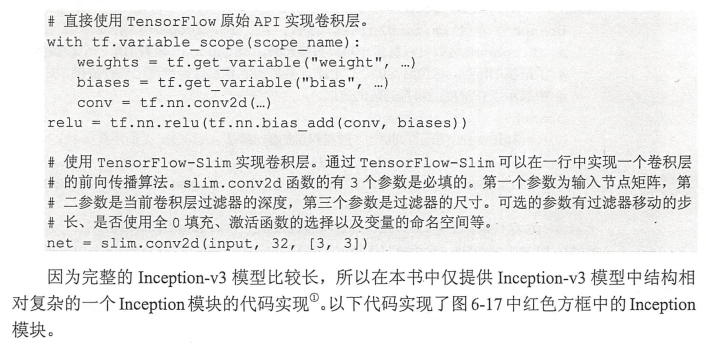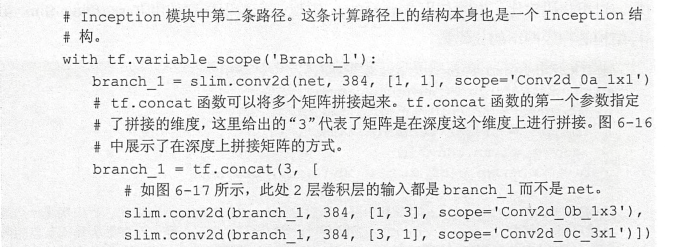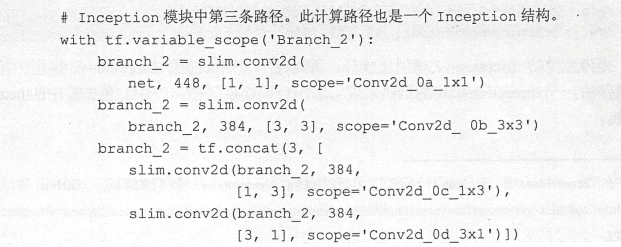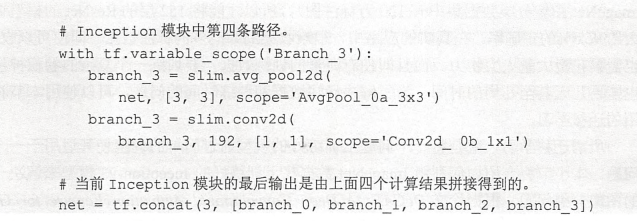


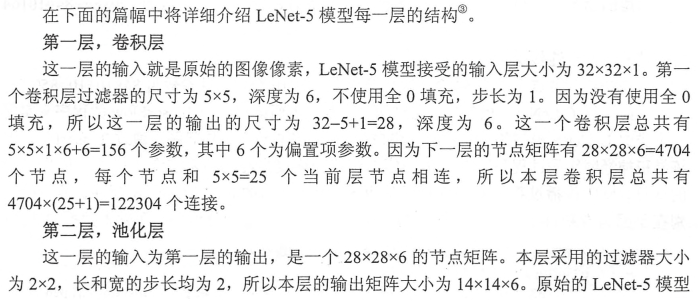
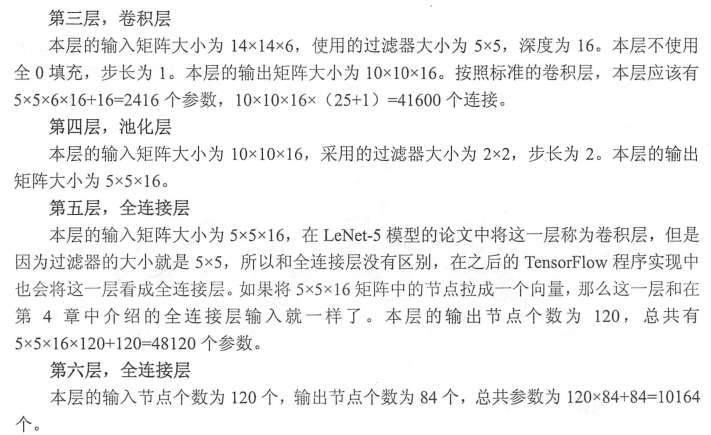
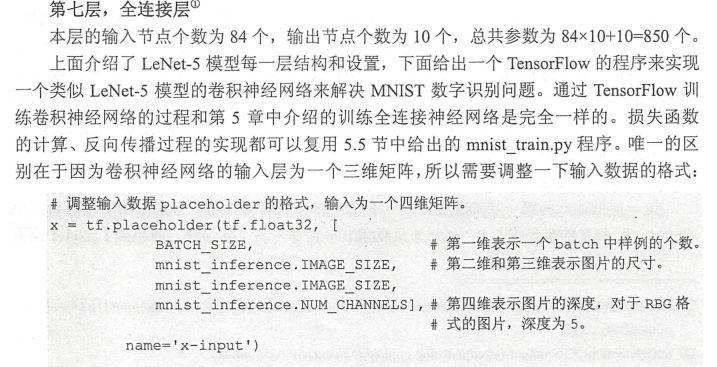

import tensorflow as tf INPUT_NODE = 784 OUTPUT_NODE = 10 IMAGE_SIZE = 28 NUM_CHANNELS = 1 NUM_LABELS = 10 CONV1_DEEP = 32 CONV1_SIZE = 5 CONV2_DEEP = 64 CONV2_SIZE = 5 FC_SIZE = 512 def inference(input_tensor, train, regularizer): with tf.variable_scope('layer1-conv1'): conv1_weights = tf.get_variable( "weight", [CONV1_SIZE, CONV1_SIZE, NUM_CHANNELS, CONV1_DEEP], initializer=tf.truncated_normal_initializer(stddev=0.1)) conv1_biases = tf.get_variable("bias", [CONV1_DEEP], initializer=tf.constant_initializer(0.0)) conv1 = tf.nn.conv2d(input_tensor, conv1_weights, strides=[1, 1, 1, 1], padding='SAME') relu1 = tf.nn.relu(tf.nn.bias_add(conv1, conv1_biases)) with tf.name_scope("layer2-pool1"): pool1 = tf.nn.max_pool(relu1, ksize = [1,2,2,1],strides=[1,2,2,1],padding="SAME") with tf.variable_scope("layer3-conv2"): conv2_weights = tf.get_variable( "weight", [CONV2_SIZE, CONV2_SIZE, CONV1_DEEP, CONV2_DEEP], initializer=tf.truncated_normal_initializer(stddev=0.1)) conv2_biases = tf.get_variable("bias", [CONV2_DEEP], initializer=tf.constant_initializer(0.0)) conv2 = tf.nn.conv2d(pool1, conv2_weights, strides=[1, 1, 1, 1], padding='SAME') relu2 = tf.nn.relu(tf.nn.bias_add(conv2, conv2_biases)) with tf.name_scope("layer4-pool2"): pool2 = tf.nn.max_pool(relu2, ksize=[1, 2, 2, 1], strides=[1, 2, 2, 1], padding='SAME') pool_shape = pool2.get_shape().as_list() nodes = pool_shape[1] * pool_shape[2] * pool_shape[3] reshaped = tf.reshape(pool2, [pool_shape[0], nodes]) with tf.variable_scope('layer5-fc1'): fc1_weights = tf.get_variable("weight", [nodes, FC_SIZE], initializer=tf.truncated_normal_initializer(stddev=0.1)) if regularizer != None: tf.add_to_collection('losses', regularizer(fc1_weights)) fc1_biases = tf.get_variable("bias", [FC_SIZE], initializer=tf.constant_initializer(0.1)) fc1 = tf.nn.relu(tf.matmul(reshaped, fc1_weights) + fc1_biases) if train: fc1 = tf.nn.dropout(fc1, 0.5) with tf.variable_scope('layer6-fc2'): fc2_weights = tf.get_variable("weight", [FC_SIZE, NUM_LABELS], initializer=tf.truncated_normal_initializer(stddev=0.1)) if regularizer != None: tf.add_to_collection('losses', regularizer(fc2_weights)) fc2_biases = tf.get_variable("bias", [NUM_LABELS], initializer=tf.constant_initializer(0.1)) logit = tf.matmul(fc1, fc2_weights) + fc2_biases return logit
import tensorflow as tf from tensorflow.examples.tutorials.mnist import input_data import LeNet5_infernece import os import numpy as np BATCH_SIZE = 100 LEARNING_RATE_BASE = 0.01 LEARNING_RATE_DECAY = 0.99 REGULARIZATION_RATE = 0.0001 TRAINING_STEPS = 6000 MOVING_AVERAGE_DECAY = 0.99 def train(mnist): # 定义输出为4维矩阵的placeholder x = tf.placeholder(tf.float32, [ BATCH_SIZE, LeNet5_infernece.IMAGE_SIZE, LeNet5_infernece.IMAGE_SIZE, LeNet5_infernece.NUM_CHANNELS], name='x-input') y_ = tf.placeholder(tf.float32, [None, LeNet5_infernece.OUTPUT_NODE], name='y-input') regularizer = tf.contrib.layers.l2_regularizer(REGULARIZATION_RATE) y = LeNet5_infernece.inference(x,False,regularizer) global_step = tf.Variable(0, trainable=False) # 定义损失函数、学习率、滑动平均操作以及训练过程。 variable_averages = tf.train.ExponentialMovingAverage(MOVING_AVERAGE_DECAY, global_step) variables_averages_op = variable_averages.apply(tf.trainable_variables()) cross_entropy = tf.nn.sparse_softmax_cross_entropy_with_logits(logits=y, labels=tf.argmax(y_, 1)) cross_entropy_mean = tf.reduce_mean(cross_entropy) loss = cross_entropy_mean + tf.add_n(tf.get_collection('losses')) learning_rate = tf.train.exponential_decay( LEARNING_RATE_BASE, global_step, mnist.train.num_examples / BATCH_SIZE, LEARNING_RATE_DECAY, staircase=True) train_step = tf.train.GradientDescentOptimizer(learning_rate).minimize(loss, global_step=global_step) with tf.control_dependencies([train_step, variables_averages_op]): train_op = tf.no_op(name='train') # 初始化TensorFlow持久化类。 saver = tf.train.Saver() with tf.Session() as sess: tf.global_variables_initializer().run() for i in range(TRAINING_STEPS): xs, ys = mnist.train.next_batch(BATCH_SIZE) reshaped_xs = np.reshape(xs, ( BATCH_SIZE, LeNet5_infernece.IMAGE_SIZE, LeNet5_infernece.IMAGE_SIZE, LeNet5_infernece.NUM_CHANNELS)) _, loss_value, step = sess.run([train_op, loss, global_step], feed_dict={x: reshaped_xs, y_: ys}) if i % 1000 == 0: print("After %d training step(s), loss on training batch is %g." % (step, loss_value)) def main(argv=None): mnist = input_data.read_data_sets("../../../datasets/MNIST_data", one_hot=True) train(mnist) if __name__ == '__main__': main()
